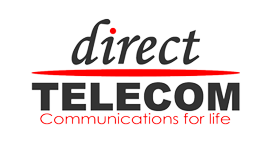What is Fibre Optics and how does it work?
Fibre optic cables transmit data using short pulses of infrared light. The optical data transmission is robust against electrical and magnetic interference. This ensures great range and high speeds that can reach the the gigabit range (1000 Mb/s) if this is the contracted speed. The Fibre Optic cables are are also less prone to damage as will not rust nor are they affected by water or humidity.
An ADSL connection, on the other hand, uses conventional telephone cables and the transmission occurs electronically. Nowadays, the copper wire exchanges in Spain are being shut down so that there is no need to maintain 2 infrastructures, replacing copper with Fibre.
Fibre optic speed: gigabit and more
What fibre optic speeds can be achieved? A typical fibre optic connection for residential clients in Spain reaches anywhere from 50Mb up to 1 Gbit/s. Businesses clients might contract dedicated circuits with higher speeds if required. The other advantage of Fibre Optics is that it is easy to upgrade to higher speeds if required.
FTT ? The final stretch
Did you know that fibre optic cables are also used in the background for ADSL connections? The data reaches the gray cabinet on the side of the road via fiber optics. There are three terms used to describe how to proceed from there to the individual connections. Direct Telecom deploys FTTH and can also arrange for FTTB in buildings and communities.
|
|
FTTC The fiber optic cable from the internet provider’s data center doesn’t end at the telephone exchange, but continues to the roadside cabinet. From here a standard copper telephone line is used to deliver the connectivity to the home. |
|---|---|
|
|
FTTB The fiber optic cable reaches the boundary of the building, such as the basement in a multi-dwelling unit. The final connection to the individual living space is made via existing cables, such as telephone line or an ethernet (LAN) network. |
|
|
FTTH (Deployed by Direct Telecom) Fiber reaches the boundary or the inside of the the living space, such as a box on the outside wall of a home or a box placed in the inside of the home, and is sometimes referred to as full fiberizing |
What is installed with Fibre?
What does the fibre optic connection look like in the home? This will largely depend on which backbone network is installing the Fibre. As Direct Telecom works with all the main backbone providers in Spain, we are able to offer different speed & price options which depend on the availability at the given location. All networks will install the Fibre socket on the wall inside the property. Then a Fibre cable will usually connect from this socket directly to the Fibre Modem/Router with WiFi. Some networks prefer installing 2 devices, one being a small ONT which then connects to the Fibre Modem/Router.
If you wish to check the availability of Fibre Optics for your home or business in Spain, please send us an email to info@direct-telecom.es so we can reply with the available options. In the meantime you can also check out the available packages here: Direct Telecom Fibre Optics packages.




